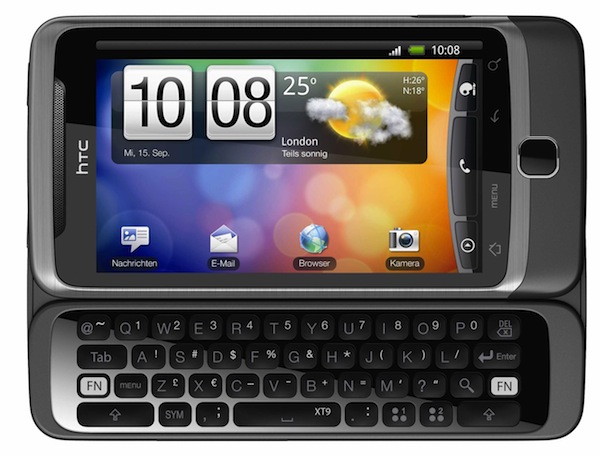
HTC has finally announced the real successor to the popular HTC Dream – the first Android smartphone to see the light. The new HTC Desire Z (called T-Mobile G2 in the US, as a direct continuation of the T-Mobile G1) is much better than anyone would’ve expected. It was announced this summer and started selling in Europe and US in October-November 2010.
Externally, it sure has nothing to remind you of the old G1/Dream. There is no bulkiness and no cheap plastic looking parts. Instead, you get an elegant phone with a strong body and metal front and back cover that looks like it can hold its own against any day-to-day uses. Of course, the main distinction between this device and all the other releases from HTC is the QWERTY keyboard, hidden underneath the screen. The company hasn’t used it since the G1 and Touch Pro 2, and now they’re back with something better than ever.
The keyboard feels perfect – you can easily type with your thumbs and there’s enough space between the keys to accommodate any type of fingers. The sliding mechanism is not your usual spring loaded slide – instead, you get an arcing motion, sort of like the G1, only vertically, and the screen piece snaps into place when it’s opened or closed. It seems pretty solid, but only time will tell if they will hold.
The biggest change from the G1 is, however, under the hood (or housing, if you prefer). The new G2 has the newest System-on-a-Chip, the Qualcomm Scorpion, which is faster than the Snapdragon and uses much less power. It is clocked at 800 MHz, but it should be able to easily overclock to 1 or 1.2 GHz. The bets thing about it may be the integrated graphics chip, which is the fastest one yet on non-Samsung phones (they hold the absolute 3D graphics performance records with their PowerVR SGX 540).
The amount of RAM has increased considerably, with the new Desire Z sporting 512 MB of RAM, which is more than enough for any apps you might want to run on it. The phone also has a pretty measly 1.5 GB of internal storage space, but that’s OK, since you get an external micro SD Card slot, so you can use cards of up to 32 GB and more. If you use the internal space for apps and external card for your data, you should be fine.
The other specs look pretty good, as well. The phone has a 5 megapixels camera that is able to shoot 720p HD videos at 30 FPS and has an integrated flash. It also supports 14.4 Mbps and 5.76Mbps HSDPA and HSUPA download/upload speeds, which is great for those who live in countries that have such high speeds. EDGE speed has also increased to 560 kbps, which is great if you travel to places without 3G signal (sadly, there are lots of them), and the phone has support for Bluetooth 3.0 and Wifi N, if you want a much faster connection without having to pay an arm and a leg.
Overall, the Desire Z is a worthy successor to the G1 and a good competitor to the Motorola Droid 2/Milestone 2. If you need a powerful smartphone with a hardware QWERTY keyboard, this one might be the best choice.










Comments